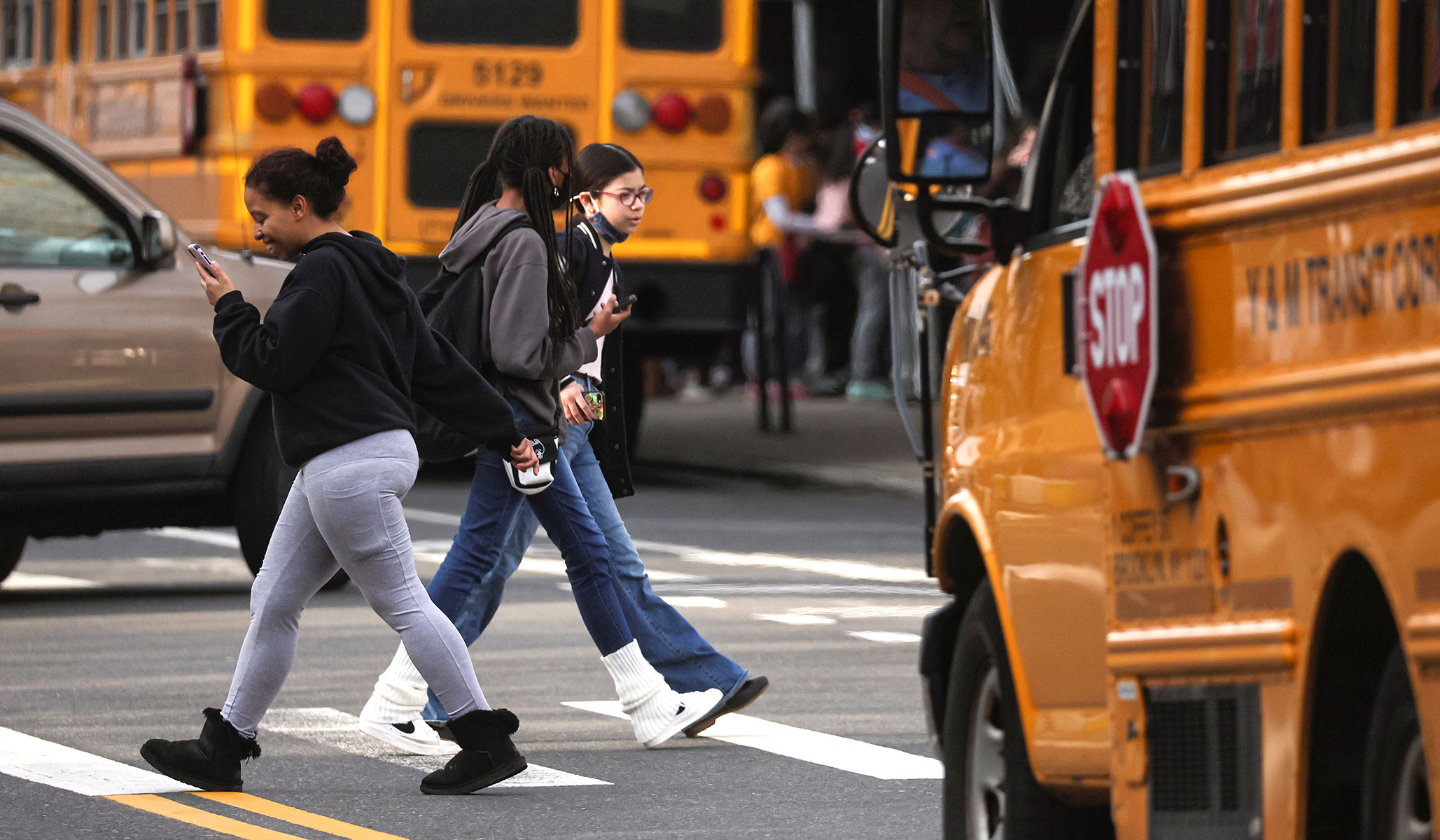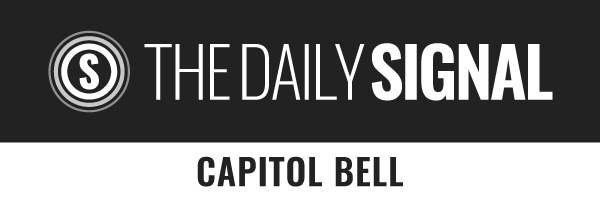Experts say it's time for education leaders, especially in big cities such as Los Angeles and New York, to acknowledge that declining enrollment in assigned public schools is here to stay.
New York City public schools are projecting enrollment losses of 30,000 students this fall — a decline Mayor Eric Adams has called a "massive hemorrhaging of students."
The drop in enrollment is part of a larger trend that accelerated during the pandemic: NYC schools lost 43,000 students in the 2020-21 school year, a 4 percent drop from the year before. The next year, NYC schools lost 21,000 students, a 1.9 percent drop.
More than 120,000 students have left the city's district schools in the last five years. All but one of the DOE's community school districts saw declining enrollment last year.
NYC school officials have blamed the decline on the pandemic, population shifts, and stalling birth rates, the New York Post reported. Big cities struggling with astronomical costs of living, such as NYC and L.A., have been hard hit by relocations. California and New York State had the largest number of residents moving out of state from 2020 to 2021, according to the U.S. Census Bureau.
However, the declining enrollment in New York City and other public-school districts also reflects a larger shift toward school choice. More parents are opting to enroll their children in charter and private schools or to homeschool. Newer options, like microschools — which typically serve 15 students or fewer — and virtual schools, have also increased in popularity since the start of the pandemic in 2020.
Overall enrollment at charter schools in the city increased by 9 percent since the pandemic began and 1.3 percent this year alone, according to data from the New York City Charter School Center. Charter schools in the city have seen six consecutive years of growth and their total enrollment stands at nearly 140,000 students as of this year.
Meanwhile, Los Angeles Unified School District — the nation’s second-largest district, behind NYC — is projected to see a 30 percent drop in enrollment over the next ten years, the Los Angeles Times reported. Enrollment in LA Unified has been slowly falling over the past 21 years, since hitting a high of 737,000 students, which led to overcrowding that negatively impacted the quality of the districts' schools.
Now, the district has some 430,000 students enrolled in K–12 and expects to see a drop of roughly 3.6 percent per year to roughly 309,000 nine years from now, according to the Los Angeles Times, which reports that experts have listed a number of reasons that factor into declining enrollment, such as families moving to more affordable areas, declining birth rates, and the growth of charter schools.
Jonathan Butcher, the Will Skillman fellow in education at the Heritage Foundation, noted that overall enrollment in assigned public schools is down nationwide; there was a drop of 1.5 million public-school students from spring 2020 to the following school year.
He told National Review in a recent interview that big cities — including Detroit and Chicago — were seeing declining enrollment before the pandemic, and then the pandemic "simply had that continue." An October 2021 analysis by Chalkbeat found that Chicago public schools saw a 15 percent increase in transfers to other school districts, a 25 percent rise in departures for private schools, and an almost 200 percent increase in students being homeschooled over the preceding two years.
"I think the biggest lesson from the pandemic about education was that the traditional school system is in fact so wrapped in bureaucracy and rules and special interest groups that it simply couldn't pivot, they couldn't adjust to a changing need,” he said.
Butcher added: "There was a changing need for families in the U.S. and the system is designed to continue a system, it's designed to support a set of school buildings that provide a very similar level of education to everybody and that is not a system that can adjust when families need something else."
As many as 80 to 90 percent of Catholic schools stayed open during the pandemic when assigned public schools were closed, as did as many as 60 percent of private schools overall.
Joseph Connor, the CEO and founder of Agora, which works with states to help run school choice programs, told National Review that for the majority of his 13-year career, education was "top down," with policy wonks, think tanks, and some legislators setting the tone for the sector, "But for the first time in my career, starting in 2020, I really saw parents begin to advocate for themselves on a level and a size I've never really previously seen."
He said he worked with families in New York who "got kind of tired of it" when schools would bounce between being fully open to remote to hybrid during the pandemic.
"And so there were increases in New York in charters and increases in the Catholic school sector as parents opted for something that was going to be more consistent in terms of education," he explained.
The pandemic "supercharged" the preexisting trend and packed the next couple of years of growth into a year or two, he said, noting that homeschooling was already on the rise, as were microschools and Catholic schools.
Some families have returned to assigned public schools after initially switching out in the early days of the pandemic, but the larger trend in falling enrollment has held. A report from PBS in April 2022 showed that the return to public schools was slower among homeschoolers than the departure, with a 63 percent increase in homeschooling last year and a 17 percent return rate to public schools.
"The canaries in the coal mine are probably the large cities like New York, LA, Chicago because the numbers are so stark that they made people kind of sit up and take notice,” Connor said.
However, Austin, Texas — a city with a growing population – also saw a decline in the number of students enrolled despite having projected an increase based on the area’s growing population.
The push for school choice has accelerated nationwide since the start of the pandemic.
Arizona had a major school-choice expansion, and there were "significant wins" last year in states "that had been held captive really to unions just years before," Butcher said, including in West Virginia and Kentucky, both of which adopted education-savings accounts last year. West Virginia also passed a law in April allowing "microschools" and "learning pods" of any size to operate in the state. However, a West Virginia judge halted the state's ESA program last month, saying it violates the West Virginia Constitution.
The governors of Texas and Iowa have said school choice is a legislative priority for them.
With this new shift, school districts will find themselves with lower enrollment and, therefore, less funding.
Connor says the shift should prompt school districts to "take a prudent long-term view that the changes that happened over the last two, three years, were not temporary and are going to be long lasting and therefore school districts need to take a hard look at their enrollment levels, the number of teachers, the number of schools, and try to figure out how they can best respond to it.”
He predicts there will be “hard choices ahead” for public schools. However, many schools are not yet feeling the crunch because a number of states, via executive action or other laws, agreed to hold funding for schools pre-pandemic levels, rather than cutting budgets to reflect the falling enrollment, he said.
This took away the incentive for schools to try to stem the drop in enrollment, because they had already been guaranteed the same funding. In addition, federal Covid-relief plans pumped billions of dollars into public schools.
“But the reality is when the funds run out at the state level, and as states begin to recount the number of kids in the school district, as they are doing now, you are going to run into a cash crunch,” he said, adding that districts could face a “death spiral” where they lose students, then lose funding, then lose more students because they make cutbacks, and continue to lose more funding.
“Increasingly, the districts are going to have to figure out how to respond to a situation in which parents are voting with their feet and not necessarily using their local option,” he added.
Butcher expects special-interest groups and teachers unions will “do what they’ve always done, which is say that they need more money.”
However, “the reality is that the federal government gave public schools an amount of money that was really unprecedented.” Schools received nearly $175 billion in K–12 emergency-relief funds from Congress and the Department of Education during the pandemic, only $17 billion of which had been spent by the start of the 2021-2022 school year.
In Los Angeles specifically, Superintendent Alberto Carvalho warned in May there were "a number of unsustainable trends" that were creating a "perfect storm" for a funding problem in the district.
"Los Angeles Unified is facing an alarming convergence and acceleration of enrollment decline and the expiration of one-time state and federal dollars, as well as ongoing and increasing financial liabilities,” he said at the time.
Carvalho warned the board that difficult conversations lie ahead and there is "not an easy path toward financial stability."
Meanwhile, the teachers’ union representing staff at LA Unified is seeking a 20 percent raise for teachers over the next two years.
| |||||||||||||||||||||||||||






No comments:
Post a Comment